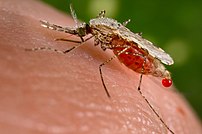[amazon_link asins=’B00B7858U6,B0000VZ34C,B0081TKL6U,B00R8FJ4GG,B00NKG5D12,B00BFX70BI,B00BUFXBZA,1312882395,B01HOZF0AS’ template=’ProductCarousel’ store=’finmeacur-20′ marketplace=’US’ link_id=’4de28982-2e2c-11e7-a4a2-091a3bbf211b’]
Botanical Name : Lactuca pulchella
Family :Asteraceae – Aster family
Genus: Lactuca L. – lettuce
Species: Lactuca tatarica (L.) C.A. Mey. – blue lettuce
Variety:Lactuca tatarica (L.) C.A. Mey. var. pulchella (Pursh) Breitung – blue lettuce
Kingdom :Plantae – Plants
Subkingdom: Tracheobionta – Vascular plants
Superdivision: Spermatophyta – Seed plants
Division: Magnoliophyta – Flowering plants
Class: Magnoliopsida – Dicotyledons
Subclass: Asteridae
Order: Asterales
Synonyms:
*Lactuca tatarica (Linnaeus) C.A. Meyer subsp. pulchella (Pursh) A.P. de Candolle
*Mulgedium pulchellum (Pursh) G. Don
*Sonchus pulchellus Pursh
Common Name : Blue Lettuce,Chicory Lettuce
Habitat:
In Michigan this species is native only to Isle Royale, where it occurs in rocky openings on ridges. It is adventive elsewhere in the state. In other portions of its range, this species inhabits moist prairies, meadows, clearings, and riverbanks. The Isle Royale populations have not been collected since 1930.
Description:
General: plant with milky sap, 20-100 cm tall.
Growth habit: perennial from white, deep-seated, creeping root, often growing in patches.
Stems: erect, hairless or almost so.
Leaves: alternate, narrowly lance-shaped, 5-18 cm
long and 6-35 mm wide, entire, or the lower ones more or
less with triangular, backward-pointig lobes or sharply
toothed, often with waxy coating beneath.
Flowerheads: blue, showy, about 2 cm wide, with
18-50 ray florets only, several in open clusters. Involucre
15-20 mm high in fruit, with overlapping bracts in 3 rows.
Flowering time: June-September.
Fruits: achenes, 4-7 mm long, the slender body
moderately compressed, prominently several-nerved on
each face, the beak stout, often whitish, equaling or less
than half as long as the body. Pappus of white, hair-like
bristles.
CLICK & SEE THE PICTURES
Cultivation:
Prefers a light sandy loam. This species is considered to be a noxious weed in N. America where it spreads freely by suckers in cultivated ground – even a small portion of the root can regenerate to form a new plant.
Propagation:
Seed – sow April in a greenhouse, only just covering the seed. Germination is usually fairly quick. Prick out the seedlings into individual pots when large enough to handle and plant them out in the summer. Division in spring. Root cuttings in spring.
Edible uses:
Young leaves – raw or cooked – of blue lettuce have been eaten by Native tribes. A gum obtained from the roots is used for chewing. However, caution should be used, because of the mild narcotic properties of the plant.
Medicinal Uses:
A tea of the roots and stems has been used by the Okanagan-Colville Indians of British Columbia in the treatment of diarrhea in children. Hemorrhoids have been treated by applying a moist, usually warm or hot mass of plant material. The whole plant is rich in a milky sap, containing ‘lactucarium’, which is used in medicine for its mildly pain-relieving, antispasmodic, digestive, urination-inducing, hypnotic, narcotic and sedative properties. Lactucarium has mild narcotic effects. It has been taken internally in the treatment of insomnia, anxiety, neuroses, hyperactivity in children, dry coughs, whooping cough, rheumatic pain etc. The sap has also been applied externally in the treatment of warts. An infusion of the roots and stems has been given to children in the treatment of diarrhea. The sap has also been applied externally in the treatment of warts.
Other Uses: The Gum has several uses.
Precautions:
The plant should be used with caution, and never without the supervision of a skilled practitioner. Even normal doses can cause drowsiness, excess causes restlessness and overdoses can cause death through cardiac paralysis.
Disclaimer:
The information presented herein is intended for educational purposes only. Individual results may vary, and before using any supplements, it is always advisable to consult with your own health care provider.
Resources:
http://montana.plant-life.org/species/lactuca_tatari.htm
http://web4.msue.msu.edu/mnfi/explorer/species.cfm?id=13578
http://plants.usda.gov/java/profile?symbol=LATAP
http://www.herbnet.com/Herb%20Uses_AB.htm
http://www.wnmu.edu/academic/nspages/gilaflora/lactuca_pulchella.html
http://www.wildstaudenzauber.de/Seiten/Praerie.html
http://www.fromoldbooks.org/Fletcher-FarmWeeds/pages/033-Blue-lettuce/411×764-q75.html
http://www.pfaf.org/user/Plant.aspx?LatinName=Lactuca+pulchella
Related articles
- Blanket Flower (findmeacure.com)
- Stem Lettuce Ceasar (ideasinfood.com)
- Heleniuim autumnale (findmeacure.com)
- Vinegar weed (findmeacure.com)
- Lettuce: It’s Not Just For Salad (fitsugar.com)
- Phyllanthus liebmannianus (findmeacure.com)
- Squash and lettuce has made an appearance! (herbscorner.wordpress.com)
- Toronto shopper finds needle in head of lettuce (ctv.ca)
- Penstemon Grandiflorus (findmeacure.com)














![Reblog this post [with Zemanta]](https://i0.wp.com/img.zemanta.com/reblog_e.png?w=580)